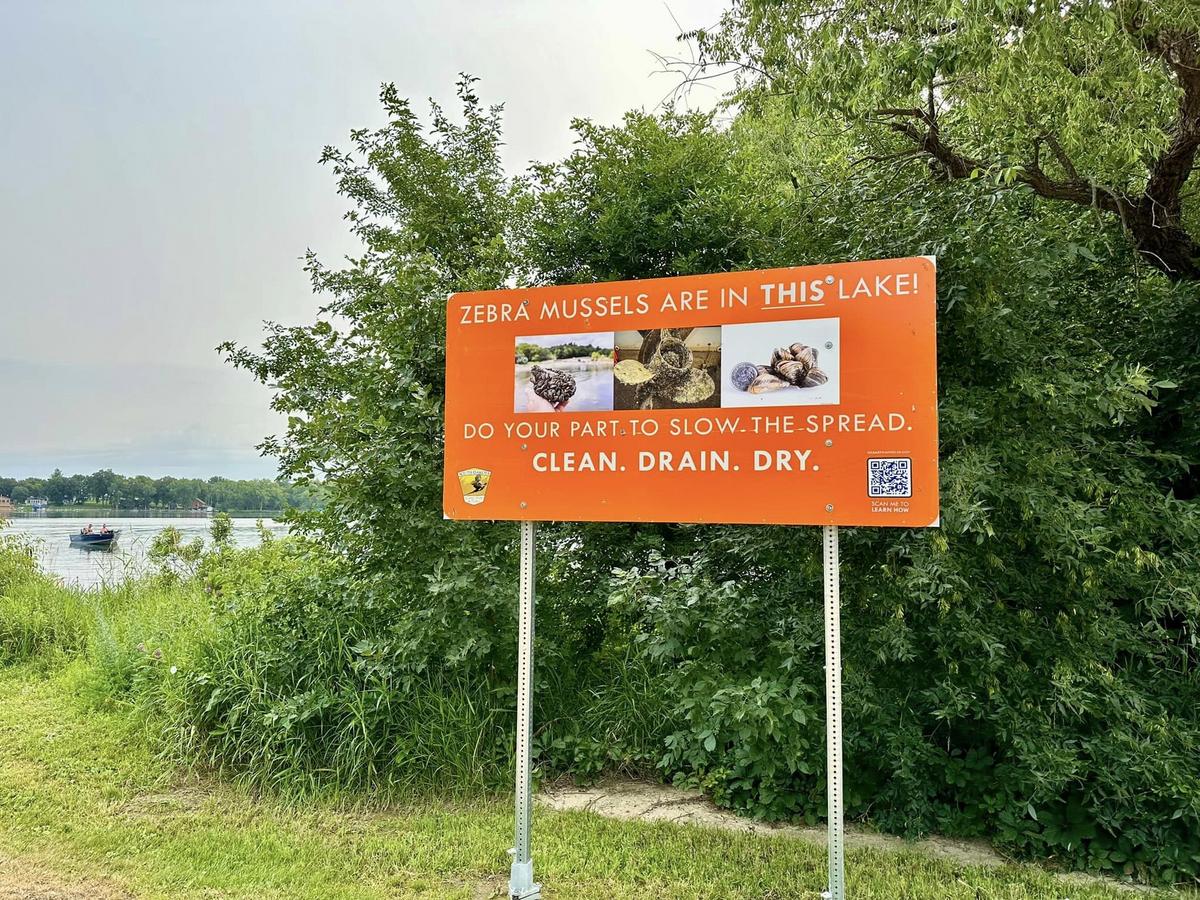North Dakota
Ukrainians move to North Dakota for oil field jobs to help families facing war back home

DICKINSON, N.D. (AP) — Maksym Bunchukov remembers hearing rockets explode in Zaporizhzhia as the war in Ukraine began.
“It was terrible,” he said. He and his wife sent their adult daughter west to Lviv for safety and joined her later with their pets.
Now, about 18 months after the war broke out, Bunchukov is in North Dakota, like thousands of Ukrainians who came over a century ago.
He is one of 16 new arrivals who are part of a trade group’s pilot effort through the Uniting for Ukraine humanitarian program to recruit refugees and migrants during a workforce shortage. Twelve more Ukrainians are scheduled to arrive by Aug. 15 as part of the North Dakota Petroleum Council’s Bakken Global Recruitment of Oilfield Workers program.
Some workers want to bring their families to North Dakota while others hope to return to Ukraine.
“I will try to invite my wife, invite my daughter, invite my cat and invite my dog,” Bunchukov told The Associated Press a week after his arrival.
The Bakken program has humanitarian and workforce missions, said Project Manager Brent Sanford, a former lieutenant governor who watched the Bakken oil rush unfold during his time as mayor of boomtown Watford City from 2010 to 2016.
The oil boom initially was met by an “organic workforce” of western North Dakotans with experience in oil field jobs elsewhere, but as the economy reeled from the Great Recession, thousands of people flocked to the Bakken oil field from other states and even other countries to fill high-wage jobs, Sanford said.
Technological advances for combining horizontal drilling and fracking — injecting high-pressure mixtures of water, sand and chemicals into rocks — made capturing the oil locked deep underground possible.
“People came by planes, trains and automobiles, every way possible from everywhere for the opportunity for work,” Council President Ron Ness said. “They were upside down on their mortgage, their life or whatever, and they could reset in North Dakota.”
But the 2015 downturn, coronavirus pandemic and other recent shocks probably led workers back to their home states, especially if moving meant returning to warmer and bigger cities, Sanford said. Workforce issues have become “very acute” in the last 10 months, Ness said.
Ness estimated there are roughly 2,500 jobs available in an oil field producing about 1.1 million barrels per day. Employers don’t advertise for every individual job opening, but post once or twice for many open positions, he said.
An immigration law firm told Ness that Uniting for Ukraine would fit well for North Dakota given its Ukrainian heritage, similar climate and agrarian people, he said.
The program’s sponsors, including company owners, managers and employees, agree to help Ukrainians find work, health care, schools for their children and safe and affordable housing.
About 160 Ukrainians have arrived in North Dakota, the majority in Bismarck, as part of Uniting for Ukraine, according to State Refugee Coordinator Holly Triska-Dally.
Applications from prospective sponsors from around the state have “gone up considerably” in recent months, likely due to more awareness but also Ukrainians who are “working and beginning to thrive” and filing to support their family, she said.
The two dozen or so Ukrainians might not seem like many arrivals on national or statewide scales, but they will make a significant difference for cities like Minot and Dickinson. The cities haven’t traditionally been major resettlement hubs, but now “there’s a strong likelihood” the workers’ families will join them, adding to the economy and schools, Triska-Dally said.
Bunchukov, who had jobs in mechanics and furniture sales in Ukraine, works for road contractor Baranko Bros. Inc. He and other new arrivals have experience in Alaska’s seafood industry. Others have worked on cruise ships or held different seasonal jobs. Because of those jobs, many workers already hold Social Security numbers and have studied English, Sanford said.
Dmytro Haiman, who said his English skills steered him toward the Bakken program, recalled sheltering with relatives in his grandmother’s cellar as the war began and bombs fell on his hometown, Chernihiv. In the first months of the war he drove people west to safety and brought canned food, medicine and even generators to Chernihiv amid supply shortages.
He told the AP he expected to work in water transportation and hopes to earn enough money to help his family, “to help us to rebuild our country.”
The Bakken program aims to recruit 100 workers by the end of 2023, and 400 after one year. Those 400 may not all be Ukrainians. Some will drive, start in shops or build roads, pads and fences, “everything from there up to well site operations,” Ness said.
The workers will start in construction and other basic jobs starting at $20 an hour and can rise quickly. They also can leave their jobs or the state while they’re in the Uniting for Ukraine program, which grants “humanitarian parole” lasting two years with a goal of a longer path beyond, but that depends on the federal government, Sanford said.
Four translators help workers with forms, training and community acclimation, Sanford said. One employer has rented eight apartments for workers, while others are in extended-stay hotels until they can find apartments.
Glenn Baranko, president of the contractor building paths to drilling rigs and providing environmental services in the oil field, planned to assign jobs to five initial workers based on their skillsets.
The labor shortage led his company to hire a full-time recruiter, “but there’s still a need,” said Baranko, whose great-grandfather came to the area from Ukraine.
At a recent lunch for several workers hosted by the Ukrainian Cultural Institute in Dickinson, the new arrivals crowded around a map to point out their hometowns. The cooks laid out dishes of rice rolls, beet bread, deviled eggs and filled dumplings called perogies.
The institute preserves the area’s Ukrainian heritage and has raised more than $10,000 for humanitarian aid since the war began in February 2022, institute Executive Director Kate Kessel said.
Mannequins wearing traditional garb, displays of decorated eggs and a Ukrainian library fill the institute’s space. A large banner bearing “Peace to Ukraine” stood over the people eating lunch at tables.
Ivan Sakivskyi, who works for Baranko, said he looks forward to opportunities for promotion, such as driving heavy equipment, and gaining new experience.
Though he doesn’t plan to live long-term in the U.S., Sakivskyi said he would like to return for work after visiting loved ones in his home country.
“My heart and my soul” are in Ukraine. “It’s my friends,” the Odesa native said. “It’s my family.”
Copyright 2023 The Associated Press. All rights reserved. This material may not be published, broadcast, rewritten or redistributed.

North Dakota
Tuesday is Military Appreciation Day at the ND State Fair

MINOT, N.D. (KMOT) – This is a reminder for servicemembers and their families that the North Dakota State Fair is continuing its long-standing tradition of honoring those who serve with a special Military Appreciation Day on Tuesday.
Military members and their families can enjoy lunch from 11 a.m. until 1 p.m. at the north festival tent.
The event is sponsored by the N.D. Beef Commission, N.D. Stockmen’s Association, and N.D. CattleWomen.
They can also enjoy free carnival rides from 1 p.m. to 3 p.m., half-off unlimited ride wristbands, and $2 off go-cart rides.
Copyright 2024 KFYR. All rights reserved.
North Dakota
Applications now available for 2024 North Dakota swan license

BISMARCK – Hunters can now apply for a 2024 North Dakota swan license
on the Game and Fish Department’s website
at gf.nd.gov, the department said Monday, July 22.
North Dakota residents and nonresidents are eligible to apply. The resident swan license is $10, while the nonresident fee is $30. The application deadline is Aug. 21.
North Dakota’s statewide tundra swan hunting season opens Sept. 28, and 2,200 licenses are available. Successful applicants will receive a tag to take one swan during the season. Since swans are classified as waterfowl, nonresidents may hunt them only during the period their nonresident waterfowl license is valid.
All swan hunters, regardless of age, are required to have a general game and habitat license when applying. In addition, nonresidents must have a waterfowl license, and residents 16 and older need a small game or combination license.
North Dakota
Zebra Mussels In North Dakota Lakes: Will It Really Be That Bad?

Zebra mussels are going to ruin all of our lakes right?
Okay, I know I’m going to take some heat on this, but here goes. We’ve been hearing about zebra mussels for a long time now. How they will destroy ecosystems, ruin beaches, clog up water intakes, compete with native species, etc.
You’ve seen the commercials and billboards from North Dakota Game and Fish, “Clean, Drain and Inspect.” Zebra mussels are a problem, but is it really all doom and gloom? More on that in a moment.
Zebra mussels are now in several North Dakota lakes and rivers, and you can bet more will be added in the future.
They include the Red River, Lake LaMoure, Lake Ashtabula, Lake Elsie, the James River, and the Sheyenne River all in eastern North Dakota.
So far western North Dakota has been spared, but you can bet zebra mussels are coming. Here’s a map and more on ANS-infested waters in North Dakota.
Humans are considered the primary transporter of zebra mussels, but there are other spreaders. According to Researchgate, waterfowl can transfer zebra mussels at the larvae stage.
What are we going to do about millions of migrating waterfowl each year? Not to mention other shorebirds, reptiles, and even mammals.
I’m very familiar with zebra mussels. I have a cabin on Enemy Swim Lake in northeast South Dakota. We’ve had zebra mussels present in the lake now going on for 3 years.
(A very small zebra mussel that was found on our beach this past weekend.)
Enemy Swim is located about 5 miles south of Pickerel Lake in South Dakota. Pickerel Lake has had zebra mussels for a few years longer than my lake.
Despite joint efforts from Fish and Game, cabin owner volunteers, and interns from Fish and Game with inspection points at the boat ramp, zebra mussels still found their way into my lake. I know we all did our part to prevent it, but I sometimes think that eventually, nature will take its course.
Will zebra mussels really ruin a lake?
There’s a lot of big claims and theories out there. No doubt it will affect your beach life. You will have to wear water shoes because zebra muscles can be sharp and could cut your feet. I know I swim with my water shoes normally anyway, as I don’t like creepy crawlies touching my feet in the water.
Will zebra mussels cause your lake property values to crash?
To be honest, no sign of that anywhere. Much of Minnesota’s lakes are infested with zebra mussels. People are still spending millions of dollars for cabins on Minnetonka, Pelican, or Detroit Lakes area lakes.
Even Pickerel Lake, next to my lake has people snatching up some very expensive million-dollar cabins. You can’t even find a cabin for sale on my lake. According to swnewsmedia, there’s no link between a drop in property values and zebra muscles.
Zebra mussels will actually clear up the water they infest.
This might improve the fishing, depending on the lake. Species like Smallmouth Bass, Perch, Walleyes, and even panfish are known to gorge on zebra mussels. You might catch bigger fish because of this.
With cleaner water means you will have more sunlight and more vegetation in the lake. Again, this is thought to improve the size of the fish. Fish will have more places to hide and grow bigger. It may cause anglers to adapt to new strategies to catch fish. In some cases, it could make fishing more difficult.
As far as whether zebra mussels will destroy the ecosystem of lakes?
I’m going to come right out and say it. I think this is highly exaggerated. I’m not a biologist and don’t claim to be one.
Zebra mussels have been in the Great Lakes since the 1980’s. The Walleyes and Smallmouth Bass have never been bigger. People are still catching fish and lakes are still alive.
Zebra mussels have been in Minnesota lakes now for decades and the cabin owners I know say nothing has changed except a little extra cleaning on the docks when they pull them out each year.
Lakes like Lake of the Woods, Mille Lacs, and all of the lakes around Detroit Lakes are still alive and well.
Let’s face it: Even the highly prized Walleye is an invasive species to lakes in our area.
In conclusion:
When zebra mussels reach your favorite lake it will certainly change the ecosystem. Your “lake life” will likely have to adapt to some necessary changes.
However, will zebra mussels turn your lake into a barren wastewater? I don’t think so. Adapt or die. That’s life in a nutshell.
Do I want zebra mussels in our lakes? No, of course not. However, I’m being realistic. Sometimes you have to look for the good with the bad.
North Dakota’s Top 11 Lakes According To Our Fans
Plant Some Of These In Your Garden to Keep Mosquitoes Away
Gallery Credit: Michelle Heart
-

 Politics1 week ago
Politics1 week agoTwo key states to see massive GOP voter registration operation
-

 News1 week ago
News1 week agoWhy the next president's judicial appointments will impact climate action
-

 News6 days ago
News6 days agoIn Milwaukee, Black Voters Struggle to Find a Home With Either Party
-

 News1 week ago
News1 week agoVideo: Biden Asks America to ‘Lower the Temperature’
-

 World1 week ago
World1 week agoUkraine: shelling in Kherson leaves at least two people dead
-

 Politics1 week ago
Politics1 week agoBiden tells Michigan crowd he's 'not going anywhere' amid chants of 'don't you quit'
-

 News4 days ago
News4 days agoVideo: Young Republicans on Why Their Party Isn’t Reaching Gen Z (And What They Can Do About It)
-

 World3 days ago
World3 days agoFreshers' week in Strasbourg for new EU lawmakers















